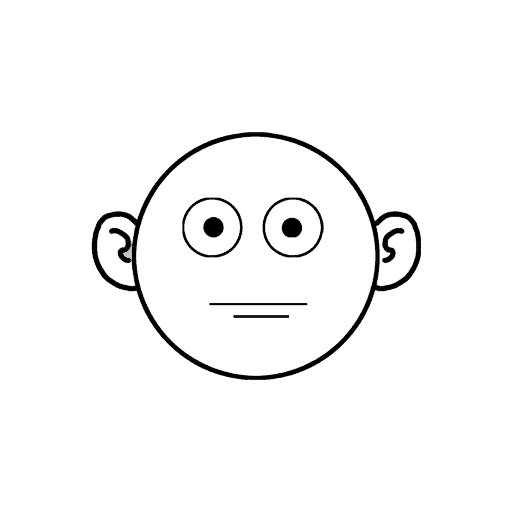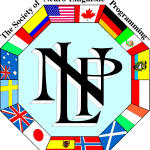
As a good practitioner of Neuro-Linguistic Programming (NLP) you have enough tools to check and to observe what information you get in return on specific questions. A typical left-handed person would have the opposite meanings for their eye-directions, keep that in mind!
On this page, the following information is assumed with a right handed person:
Enough theory, let’s get started. First, eye accessing cues are behaviours in movement of the eyes that will both help to trigger and indicate which representational system a person is using to think with. Typical types of accessing cues include eye movements, voice tone, tempo, body posture, gestures and breathing patterns.
We all have our own model of their world. For instance, when I look at you, I see your face and the world behind you. The same is true about you towards me. You look at me, you see my face and you see the things that are behind me I cannot see. This directly demonstrates that something can happen to the both of us but yet we still have a different experience depending how we experienced that particular event. You do not look the same direction as I do, so our experience of the event differs, for each and every person.
The memories these events create within us, are stored as an internal representation. That specific event is kept in the brain a s a picture, sound, feeling, or thought.In fact, all of our memories are stored as a specific set of images, slides, movies, sounds, feelings, smells, and tastes (VAKOG). This is how we make a difference between one set of memories from another. We mentally recreate and recall our experiences (memories) with these stored pictures, words, sounds, and physical feelings as we think. Now let’s see which flavours we can discover in moving our eyes … Note: The following pictures of eye movements are as you watch someone’s eyes. When there is a reference to a location, this is your left or right as if the person is in front of you.
The nature of the eye accessing is in the fact that the eye-nerve is the closest one to the brain. None the less, the eyes are the so called window of the soul. Eye accessing cues are there to light up specific corners of the brain. An example is as you ask a question like “How does it feels to be wet?” Probably your eyes propel trough their homes to find the answer. Basically your eyes were lighting up each and every part of the brain to find the right answer. Now let’s take a closer look at the specific eye accessing cues. NLP Eye Accessing Cues.

Moving up and to your left would be accessing an image they need to construct a picture of because they either have not seen it before. Because the picture has been stored in the past and not the immediate recall zone. When people are making pictures up in their head, they are using visual constructed. A good question would be: “What would your room look like if it were purple?”, “How does a crossbreed between a cat and a giraffe look like?”, “Do think about a purple elephant!”, “What would your favourite car look like?” NLP Eye Accessing Cues.
Up and to your right would elicit an image they seen or imagined before. In addition, some people access visual remembered by de-focusing their eyes. “What colour was the room you grew up in?”, “How many chairs are there in your living room?”, “What was the colour of your first bike?”, “What is the colour of your favourite shirt?”, “What kind of pattern is on your bedspread?”, “Think of the last time you saw someone running.”, “Who were the first five people you saw this morning?”


Lateral and to your left would be accessing something they have not heard before, or they have to construct a sound or conversation. A good question would be: “What would I sound like if I had Donald Duck’s voice?”, “How does a cat sound barking?” Imagine the sound of a train’s whistle changing into the sound of pages turning. Can you hear the sound of a saxophone and the sound of your mother’s voice at the same time? NLP Eye Accessing Cues.
Lateral and to your right would be eliciting something they have heard before. This could be a conversation or sound, and it could be of themselves or someone else. Examples of questions you can ask are “What was the very last thing I said?” and Can you remember the sound of your mother’s voice?”, “Who did you speak to the last time you were on the telephone?”, “Can you think of one of your favorite songs?”, “Think of the sound of clapping.”, “How does your car’s engine sound?”.


Eyes down and to your left would access a person’s feelings internally (e.g. emotions) or externally (e.g. tactile feel of velvet or a cat’s tongue). A good question is “What does it feel like to touch a wet rug?”, “Are your hands warm now?”, “How does it feel to swim in water?”, “How does it feel to be wet?”, “Can you remember how you felt the last time someone you disliked complimented you?”, “Can you think of a time you felt satisfied about something you completed?”, “Think of what it feels like to be exhausted.”, “When was the last time you felt impatient?”. NLP Eye Accessing Cues.
Eyes down and to your right would access the person’s self talk or internal dialogue. “Can you say the alphabet inside your head?”, “Take a moment and listen to the sound of your own inner voice.”, “How do you know you listen to your own voice?”, “In what types of situations do you talk to yourself the most?”, “Think of the kinds of kindest things that you say to yourself most often.” NLP Eye Accessing Cues.


When people answer your question direct and promptly, it can indicate that the information is already present. Again, as a good NLP Practitioner, you have sufficient tools to check if this is the case. And maybe it is a good suggestion to talk about something else … Also, when you observe your partner and see if his or her eyes are spiralling trough their homes and no answer comes, it indicates to you that they are asking the question to each and every part of their brain. NLP Eye Accessing Cues.
One thing more. It seems that some people are not moving their eyes at all. No matter what you ask them, their eyes do not move! Finally here are two hints to pay attention to, one, their eye-movement is more quick than others, so you have to watch closer to observe how they move. Two, they move their entire head so the eyes do move to the specific corner of their brain making it look like that they keep looking at you. It is against all odds they do. Good advice for you, observe, observe, observe and be quick! NLP Eye Accessing Cues
For more information, we suggest you read Patterns of the Hypnotic Techniques of Milton H. Erickson, M.D. Volume 1 by Richard Bandler and John Grinder (Jun 1, 1975) NLP Eye Accessing Cues

Our NLP Practitioner Training starts in:
On Checkout use the code NLP10PCTOFF and gain an extra 10% off our already discounted price.